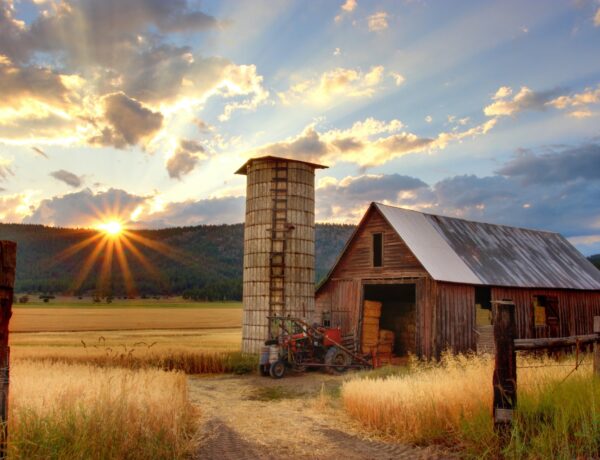Steampunk is a genre that’s as intriguing as it sounds. It’s like a creative handshake between the past and the future, merging the historical charm of the 19th century with imaginative futuristic ideas. Picture a world where steam power reigns supreme, but the technology is as advanced as anything in science fiction. That’s the essence of steampunk – a fascinating blend of the old and the new, the familiar and the fantastical.
The roots of steampunk are as interesting as the genre itself. It started gaining traction in the late 20th century, drawing inspiration from the works of Victorian-era authors like Jules Verne and H.G. Wells. These authors, often seen as pioneers of science fiction, laid the groundwork with their imaginative tales of futuristic inventions within the context of their own times. Over the years, steampunk has evolved, embracing not just literature but also fashion, art, and film, turning into a diverse and rich subculture. It’s a genre that celebrates creativity, encouraging its fans to envision a world where history and future merge in unexpected and exciting ways.
The Essence of Steampunk
At its core, steampunk is a unique fusion of the past and the future. It takes the industrial steam-powered machinery of the 19th century and melds it with futuristic innovations that might seem more at home in a sci-fi novel. Imagine brass and copper gears meshing with advanced technology, set against a backdrop of Victorian elegance and industrial grit. This juxtaposition is what gives steampunk its distinctive flavor.
The influence of Victorian and Edwardian aesthetics in steampunk can’t be overstated. These eras, known for their strict social norms and stunning advancements in technology and industry, provide a rich tapestry for the genre. Steampunk borrows heavily from the visual styles of these periods – the ornate fashion, the intricate architecture, and the old-world charm. But it doesn’t just replicate these styles; it reinvents them, often adding a rebellious or whimsical twist.
This unique visual and thematic style sets steampunk apart. It’s not just about slapping some gears on a top hat or adding steam engines to airships. It’s about creating a world where the elegance of the past meets the possibilities of the future. Steampunk is a playground for the imagination, a place where creators and enthusiasts can explore the ‘what ifs’ of history and technology. It’s this blend of historical authenticity and creative speculation that makes steampunk a genre that continues to captivate and inspire.
Steampunk as a Reflection of History and Imagination
Steampunk fiction is like a time machine with a twist. It takes us back to historical settings, often the 19th century, and then adds a layer of imaginative, futuristic concepts. This isn’t history as we know it, but a reimagined version where steam-powered technology has leaped far beyond its historical boundaries. It’s a world where airships dominate the skies, and clockwork contraptions do things that we in the 21st century would use electricity for.
This blending of history with advanced technology allows steampunk to explore alternative versions of the past. It asks questions like, “What if the Industrial Revolution had gone a step further?” or “What if steam power had been the gateway to even more advanced technologies?” This reimagining of history goes beyond just technology; it often includes societal development as well. Steampunk worlds may feature social hierarchies and cultures that are familiar yet distinctly different, influenced by the alternate technological path the world has taken.
In these worlds, the limits of technology and society are often only bound by the creator’s imagination. Steampunk doesn’t just recreate a historical era; it reinvents it, giving authors and artists the freedom to experiment with both the past and the future. This intersection of history and fantasy creates a playground for storytelling, where the familiar is transformed into the extraordinary, and the possibilities are as endless as the imagination.
Key Elements in Crafting Steampunk Worlds
In steampunk, certain elements are almost iconic, acting as the building blocks of this imaginative genre. Airships, for instance, are a staple. These aren’t just any old balloons; they’re often grand, floating vessels, decked out with brass fittings, spinning propellers, and billowing steam engines. They embody the spirit of adventure that’s central to many steampunk stories.
Then there are the clockwork devices. From intricate pocket watches to complex automatons, these gear-driven creations bring a sense of wonder and craftsmanship to the steampunk world. They represent a fusion of art and engineering, a hallmark of the genre’s aesthetic.
Of course, we can’t forget the advanced steam-powered technology. This is where steampunk really flexes its creative muscles. Imagine steam engines powering everything from computers to robots, all designed with a Victorian flair. This technology isn’t just for show; it’s woven into the fabric of steampunk societies, shaping everything from transportation to communication, often in ways that challenge our modern perceptions of technological progress.
Creating these worlds requires detailed world-building. It’s not enough to just add a few gears and call it steampunk. Authors and creators dive deep into the mechanics of their worlds, considering how the technology would affect everything from the economy to social structures. They create settings that are both believable and imaginative, grounding their fantastical elements in a reality that feels familiar yet wonderfully strange.
This detailed world-building is what makes steampunk so captivating. It’s a genre that invites readers to explore worlds where history has taken a different turn, where the possibilities of technology are limited only by the imagination. In these worlds, every steam whistle and gear click tells a story, and every invention is a testament to the creative spirit of the genre.
The Appeal of Steampunk Fiction
Steampunk fiction holds a special appeal, captivating both readers and writers with its unique blend of elements. At its heart, steampunk is about creative freedom. It’s a genre that invites storytellers to bend the rules, mix different eras, and imagine what could have been. This freedom is exhilarating, allowing writers to play with history and technology in ways that other genres might not permit.
The aesthetic appeal of steampunk is another significant draw. There’s something inherently fascinating about the fusion of Victorian elegance with rugged industrial machinery. The visual imagery of steampunk is distinct and striking – from brass goggles and corseted dresses to gleaming airships and intricate gadgetry. This style extends beyond the pages of books, influencing fashion, art, and even movie making, creating a comprehensive cultural footprint.
Furthermore, the blending of past and future in steampunk opens up a unique space for exploration and innovation. This genre doesn’t just look back nostalgically; it reimagines history with a forward-thinking twist. It creates a playground for ideas, where writers and readers can ponder ‘what if’ scenarios that combine the best of both worlds.
Thematically, steampunk often delves into the relationship between technology and society. It explores how different forms of technology might have changed historical paths or societal structures. Themes like exploration, both geographical and scientific, are prevalent, reflecting the human spirit’s unending quest for knowledge and discovery. Likewise, the impact of technology on society is a recurrent theme, questioning how different inventions might have influenced social hierarchies, politics, and everyday life.
Final Thoughts
Steampunk fiction really stands out for how it mixes old and new. It’s not every day you get to see Victorian-style settings combined with futuristic inventions that seem straight out of a science fiction novel. This blend of historical and futuristic elements is what gives steampunk its unique flavor. It’s like taking a familiar world from the past and sprinkling in some imaginative, high-tech twists.
The great thing about steampunk is that it’s not just about cool gadgets and quirky fashion. It makes us think about our own history and technology in new ways. What if the past had taken a different turn? How would different technologies change how we live? Steampunk isn’t just a fun escape; it’s a way to explore these big questions in a creative setting.
Plus, steampunk isn’t just stuck in one type of story. It can fit into all sorts of tales, from wild adventures to mysterious thrillers. It’s a style that’s as flexible as it is imaginative, making it a playground for storytellers and a joy for readers.
So, steampunk isn’t just about blending the past with the future. It’s about opening up new ways to tell stories and think about our world. It’s a reminder of how creative and thought-provoking storytelling can be, all while being a lot of fun to dive into.




No Comments